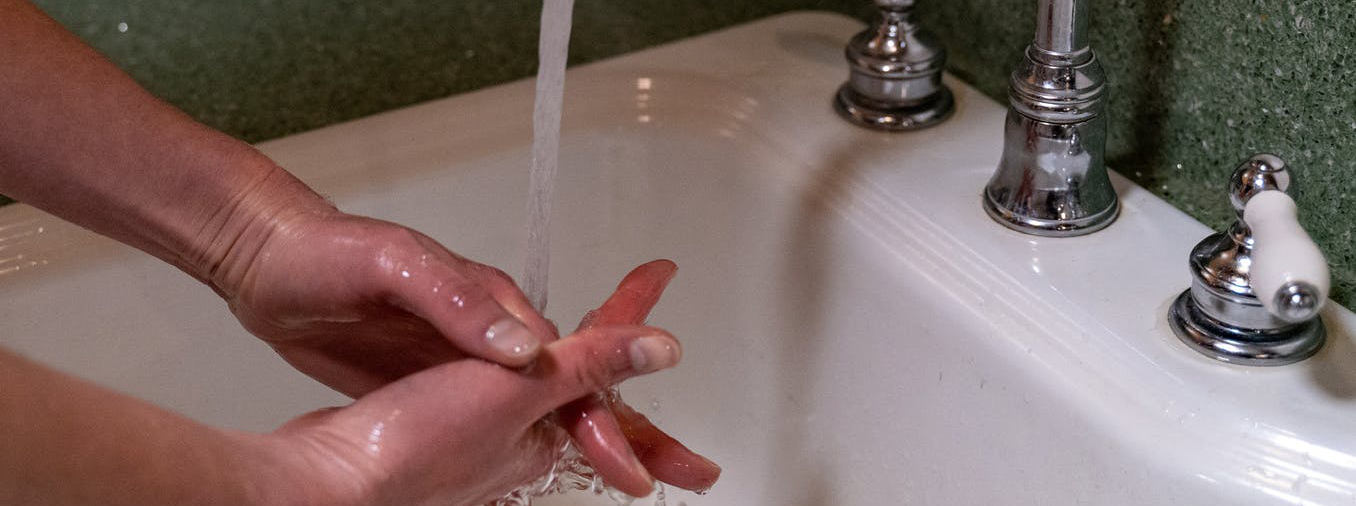While Australia gradually opens up from COVID-19 lockdown, Victoria is still struggling to contain the outbreak.
The Black Lives Matter protest in Melbourne on June 6, which attracted thousands of face-masked and hand-sanitised protesters, did not prove to be the public health nightmare many commentators (particularly politically conservative ones) had predicted.
But Melbourne is nevertheless contending with a worrying spike in case numbers arising from infection clusters around staff working in quarantine sites and extended family gatherings.
From the beginning of the COVID-19 pandemic, we were told two behaviours were crucial to keeping us safe: social distancing and handwashing.
The coronavirus crisis has brought the mundane act of washing our hands into public discussion, and the internet is now awash (ahem) with advice, from the practical to the surreal.
If there’s one place where you would expect hand cleanliness to be beyond reproach, it’s hospitals. But this isn’t necessarily the case.
Surprisingly, hand hygiene is a vexing issue in hospitals all over the world.
Repeated studies have shown it is common for hospital staff to follow hand hygiene protocols less than 50% of the time.
This is as true in Australia and New Zealand-Aotearoa as it is globally. As any infection control nurse will tell you, specialist doctors are often among the worst offenders.
Who teaches hospital staff how to handwash?
Like most Western-style hospitals, all Australian hospitals have infection control experts, typically nurses, whose job is to educate, advise and monitor compliance on infection control protocols among hospital workers.
This is lifesaving work, because hospitals are prime breeding grounds for deadly antibiotic-resistant bacterial strains.
The main line of defence in hospitals against these potentially fatal infections is prevention, hence the strict protocols around hand hygiene, and widespread use of gloves, robes, masks and safety googles.
Proper hospital hand hygiene involves using gloves, hand sanitiser, and frequent handwashing.
Protocols dictate that gloves should be used in situations where health workers might expect to come into contact with blood, bodily fluids or other contaminants.
Staff should wash or sanitise their hands before and after every patient contact, and in all situations where there has been contact with potentially contaminated material.
Infection control nurses undertake routine hand hygiene audits, and hospital staff can be disciplined if they fail to comply with the protocols.
Three types of handwashers
What makes hospital staff more or less likely to comply? It turns out there are different categories of handwasher, and therefore different ways to help people remember to do it.
While working on a project looking at communication in a multidisciplinary hospital team, infection control education became one of the areas of interest.
Part of the study focused on the hand hygiene habits of hospital staff in a ward with particularly high infection risks.
Based on observations, interviews and informal conversations, we discovered nursing staff tended to fall into one of three broad categories: “hero healthworkers”, “family members”, and those who were “working for the whitegoods”.
Overall, most health-care workers practised good hand hygiene most of the time.
But when there was time pressure — such as during short-staffed shifts, or when multiple patients were in particular need at the same time — nearly everyone had moments of non-compliance. But, fascinatingly, there were patterns to this non-compliance.







